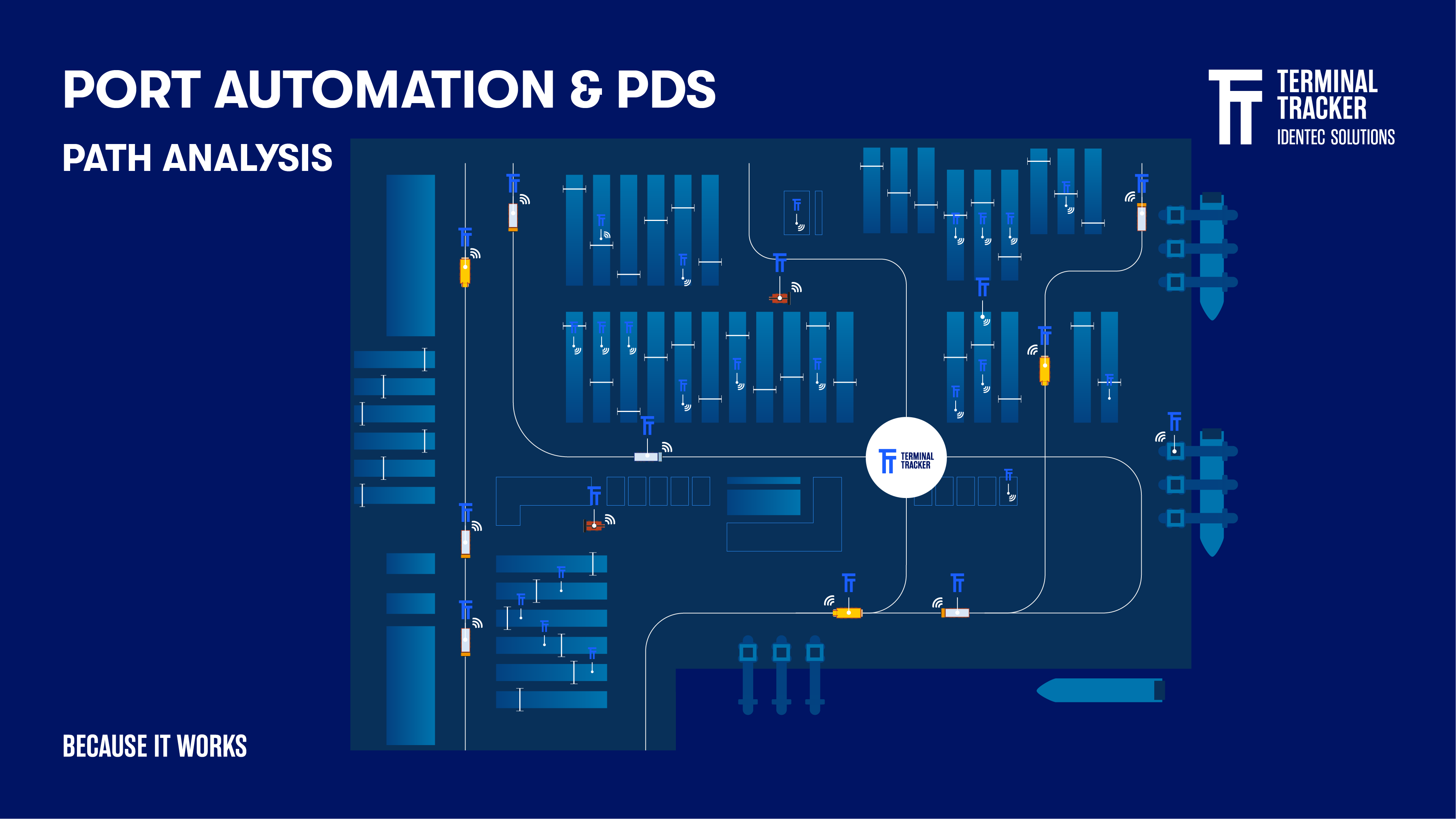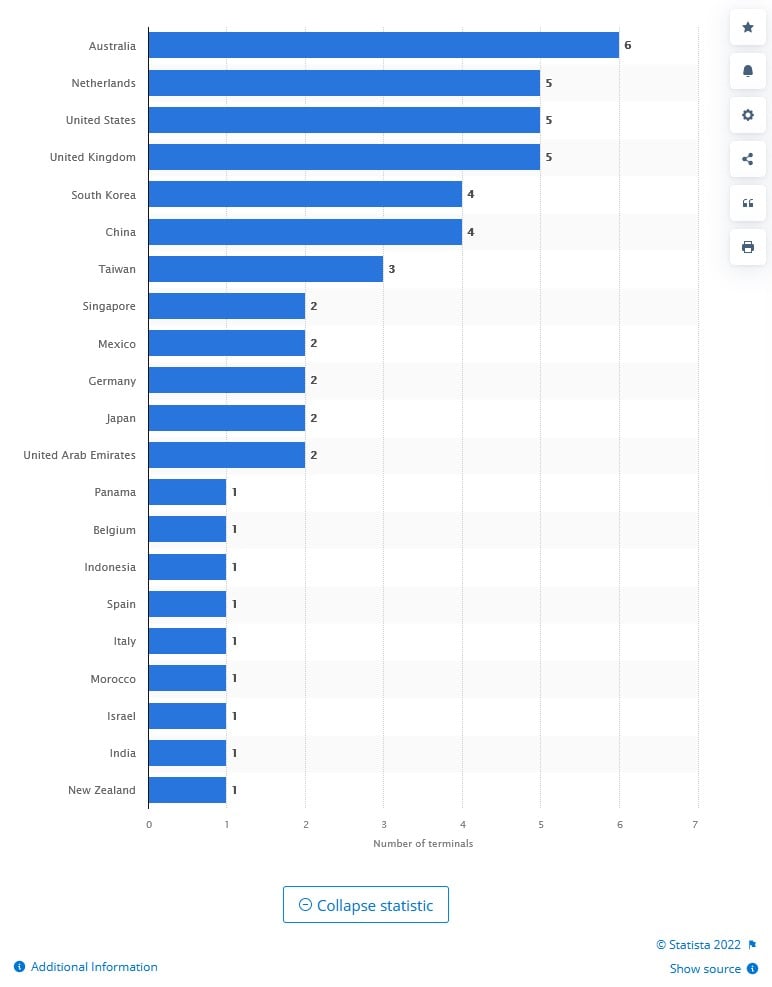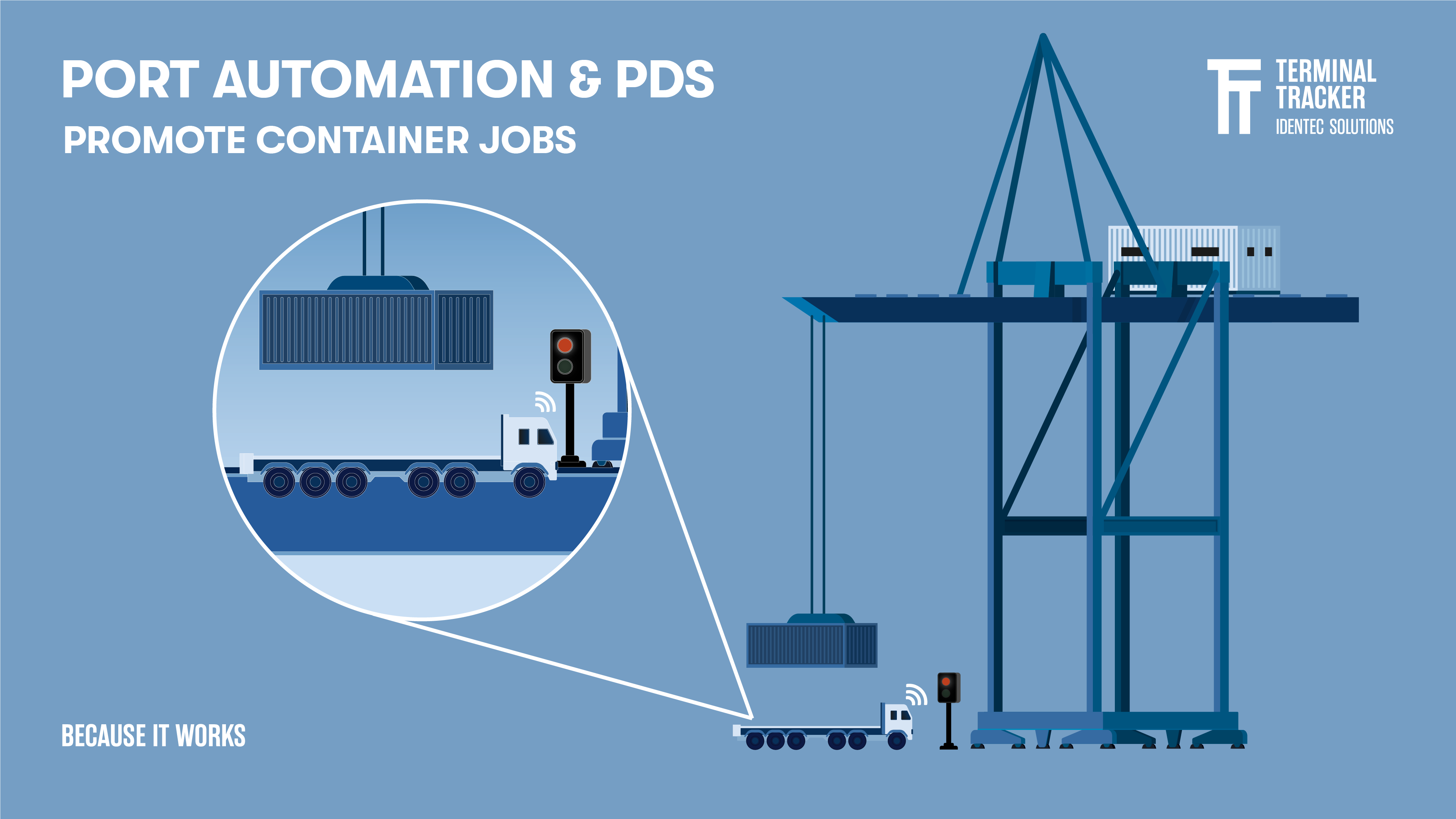Automation and PDS: Who is using IT?
| Written by Mark Buzinkay
A position detection system can be used to automate the process of container handling at ports. This helps improve operational efficiency and reduce the risk of delays and accidents.
In this extended post we describe the benefits of and the need for position detection systems (PDS) when automating a container terminal.

No video selected
Select a video type in the sidebar.
Table of contents:
- What are the Benefits of Automation?
- The Need for Position Detection Systems (PDS)
- Port Automation with PDS - a Global Picture
- What are the Current Barriers to Port Automation?
- Port Automation, PDS and the Future
- Takeaway
- Glossary
Ports are a vital part of the global supply chain, handling a tremendous amount of trade every day. In order to keep up with demand, ports must operate efficiently and safely. A position detection system can help automate the container handling process, making it safer and more efficient.
What are the Benefits of Automation?
The first major push for port automation came in the 1990s as global trade surged. This led to a need for more efficient intermodal equipment and trained labour. However, with the advent of information technologies, it became possible to integrate physical and informational systems, which made automation possible. Growing ship sizes have encouraged ports to improve their productivity, namely throughput and ship turnaround time. As a result, automated ports are now able to handle 30% more traffic than standard terminals. Automation has thus changed the global logistics landscape by making it more efficient and effective.
There are many benefits to automating the process of container handling at ports. Automation can help improve the efficiency of port operations and reduce the risk of delays and accidents. By tracking the movement of containers within the port area, automation can help to ensure that they are handled safely and efficiently. This ultimately helps to improve the flow of goods within the entire supply chain in general, in the port in particular.
One of the most beneficial areas of container terminal operations for automation is yard operations. The primary benefit of automated yard planning is increased efficiency in container handling operations. Yard planners can reduce congestion and improve asset utilisation by automating the process of stacking containers. Additionally, automated horizontal movement systems can improve throughput by reducing containers' need for manual handling. Automated Stacking Cranes (ASCs) can also help to optimise container placement within the terminal, and accurate container position determination through sensors can enable quick retrieval of containers when needed. Ultimately, these automation technologies can help improve freight terminals' efficiency and competitiveness (learn more about smooth container terminal yard operations).
Automated ports worldwide
The Need for Position Detection Systems (PDS)
Container handling must be done safely and without delays to maintain the tight schedule of the global logistics chain participants. A position detection system can help with this in a container port.
As mentioned above, yard operations are suitable for automation. But yard automation requires container position determination systems that make the location of all the containers within the terminal known at any time through sensors. This enables their effective management, making them available to be quickly retrieved for loading on a ship or picking up for inland distribution.
A position detection system uses sensors to track the positions of objects in an area. This information can then be used to help guide the movement of containers within the port. By knowing the precise location of each container, the port can operate more efficiently and avoid delays.
Position detection systems can use various sensors, including radar, lasers, RFID, and ultrasonic sensors. These systems can be used to track both stationary and moving objects. Hundreds or even thousands of containers in a busy container port may be moving around at any given time. An effective and reliable position detection system can help keep track of all of them and ensure that they are moved safely and efficiently.
Position detection systems use different concepts on how to keep track of all moving containers. A clever way to do this is to follow the movement of container handling equipment and combine their position and actions with the current container. The yard's container positions database remains accurate and reliable by sharing and storing this information with the Terminal Operating System (TOS). An accurate database is a prerequisite to executing work orders efficiently.
Port automation with PDS - a Global Picture
It is not surprising that there is a drive for smart port technology. The main reasons why container terminals aim for automation are to improve cost efficiency, safety, and reliability. Automation can help reduce operating expenses by up to 50% and increase productivity by up to 30%. Automation often aims to reduce generalised costs per unit handled in terminal operations. However, these expectations still need to be fulfilled. This is further underlined by handling standard container box sizes using conventional equipment, which is susceptible to automation.
Despite the technological difficulties, the high capital investment in upgrading ports and the unfulfilled expectations of overall efficiency, automation takes place: By 2021, 51 terminals worldwide are considered automated (20) or semi-automated (31). A fully automated terminal is a terminal where both the stacking yard and horizontal transfers between the quay and the yard are automated. This means that a container is handled automatically from the dockside to the pickup area. On the other hand, a semi-automated terminal only involves an automated staking yard.
Some of the reasons that motivate the automation of container terminals are:
- The appearance of mega-ships with a capacity of up to 24,000 TEU. Ports, confronted with extreme demand peaks, mitigate the operational stress with automated, streamlined logistics chains.
- When a terminal is limited in geographical expansion. In these cases, automation is a key strategy for improving performance, streamlining processes and increasing competitiveness.
- Automation is essential to increase the performance and efficiency of movements if a terminal is operating as a transhipment hub (e.g. ports of Singapore).
- The better (read: efficient, reliable and robust) terminals are, the more they attract clients.
Even relatively young terminals can ascend to globally significant terminals quickly by providing optimal infrastructure, processes and costs. This adds value to the passing of goods through such ports. A good example is the port of Salalah, Oman, ranking among the best in efficiency and total TEU volume globally.
In short, the automation of container terminals is motivated by a desire to improve performance, efficiency, and competitiveness while also providing a better customer experience. Automation can help achieve these goals by increasing productivity and reducing errors while also providing traceability throughout the process.

What are the Current barriers to port automation?
The shortage of specialised engineers is one of the main barriers to port automation. Without enough trained staff, filling the necessary positions in an automated port can take up to five years. This can make it difficult for port and terminal operators to keep up with the demand for these services.
Data silos and a lack of standards are other common barriers to automation. These silos can block information from being accessible to other parts of an operation, making it difficult for automated systems to communicate with each other. This can lead to poor-quality data, incompatible formats and fragmented systems, making it challenging to implement automation successfully.
Finally, when ports automate manual processes without first simplifying them, they often encounter problems. Exception handling can be time-consuming and requires staff familiar with the equipment. This can make it difficult to automate these processes effectively (learn more about the role of a CHE operator).
Port automation, PDS and the future
As communities and policies implement more and more environmental standards, clean and energy-efficient terminals are moving into focus. Fully automated terminals result in significantly lower emissions than conventional terminals because the handling equipment used runs mainly on electric power instead of diesel fuel. In addition, the terminal design minimises the amount of travel (and idling) for horizontal transport and over-the-road trucks. This is particularly relevant in densely populated areas, where the city authorities monitor air pollution and force ports to improve their emissions. Some terminals already plan to use zero or near-zero-emission container-handling equipment by 2030.
In short, the automation of container terminals is continuing as efficiency, competitiveness, and rising global standards are the main drivers. New terminals are already designed as automated container terminals because there are no running operations to be obstructed. Existing terminals must be retrofitted cautiously and step-by-step, avoiding stoppage of operations and a misbalance of efficiencies between terminal areas.
Takeaway
A position detection system can be used to automate the process of container handling at ports. This helps improve operational efficiency and reduce the risk of delays and accidents. The position detection system tracks the movement of containers within the port area in order to ensure that they are handled safely and efficiently. Ultimately, this helps to improve the flow of goods within the supply chain, saving energy and reducing pollution and port congestion.
Dive deeper into one of our core topics and learn more about: Smart Port
Glossary
A data silo is a repository of data controlled by one department or business unit and isolated from the rest of an organisation. It typically arises due to technical, organisational, or cultural factors, making it difficult for users in other parts of the company to access and utilise the data. Data silos hinder collaboration, efficiency, and data-driven decision-making across the organisation, presenting a significant challenge for companies aiming to be data-driven. (1)
Ship turnaround time is the duration a vessel spends at a port from arrival to departure. It includes time for mooring, unloading, loading, and other necessary operations. Efficient turnaround times are crucial for optimising vessel utilisation and port productivity. Factors influencing turnaround time include port infrastructure, cargo handling equipment, workforce efficiency, and technological systems. Shorter turnaround times lead to increased vessel productivity, reduced costs, and improved overall maritime supply chain efficiency. (2)
Sources:
(2) Orive, & Santiago, & Corral, & González-Cancelas,. (2020). Strategic Analysis of the Automation of Container Port Terminals through BOT (Business Observation Tool). Logistics. 4. 3. 10.3390/logistics4010003.
(3) Theo Notteboom, Athanasios Pallis and Jean-Paul Rodrigue (2022) Port Economics, Management and Policy, New York: Routledge, 690 pages / 218 illustrations. ISBN 9780367331559.
(6) Davenport (2014): Big Data at Work: Dispelling the Myths, Uncovering the Opportunities. Harvard Business Review Press.
(7) Bichou (2013): Port Operations, Planning and Logistics. Informa Law from Routledge.
Note: This article was updated on the 11th of September 2025.

Author
Mark Buzinkay, Head of Marketing
Mark Buzinkay holds a PhD in Virtual Anthropology, a Master in Business Administration (Telecommunications Mgmt), a Master of Science in Information Management and a Master of Arts in History, Sociology and Philosophy. Mark spent most of his professional career developing and creating business ideas - from a marketing, organisational and process point of view. He is fascinated by the digital transformation of industries, especially manufacturing and logistics. Mark writes mainly about Industry 4.0, maritime logistics, process and change management, innovations onshore and offshore, and the digital transformation in general.





